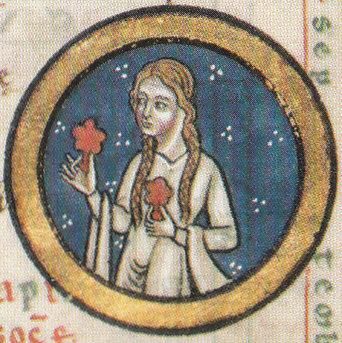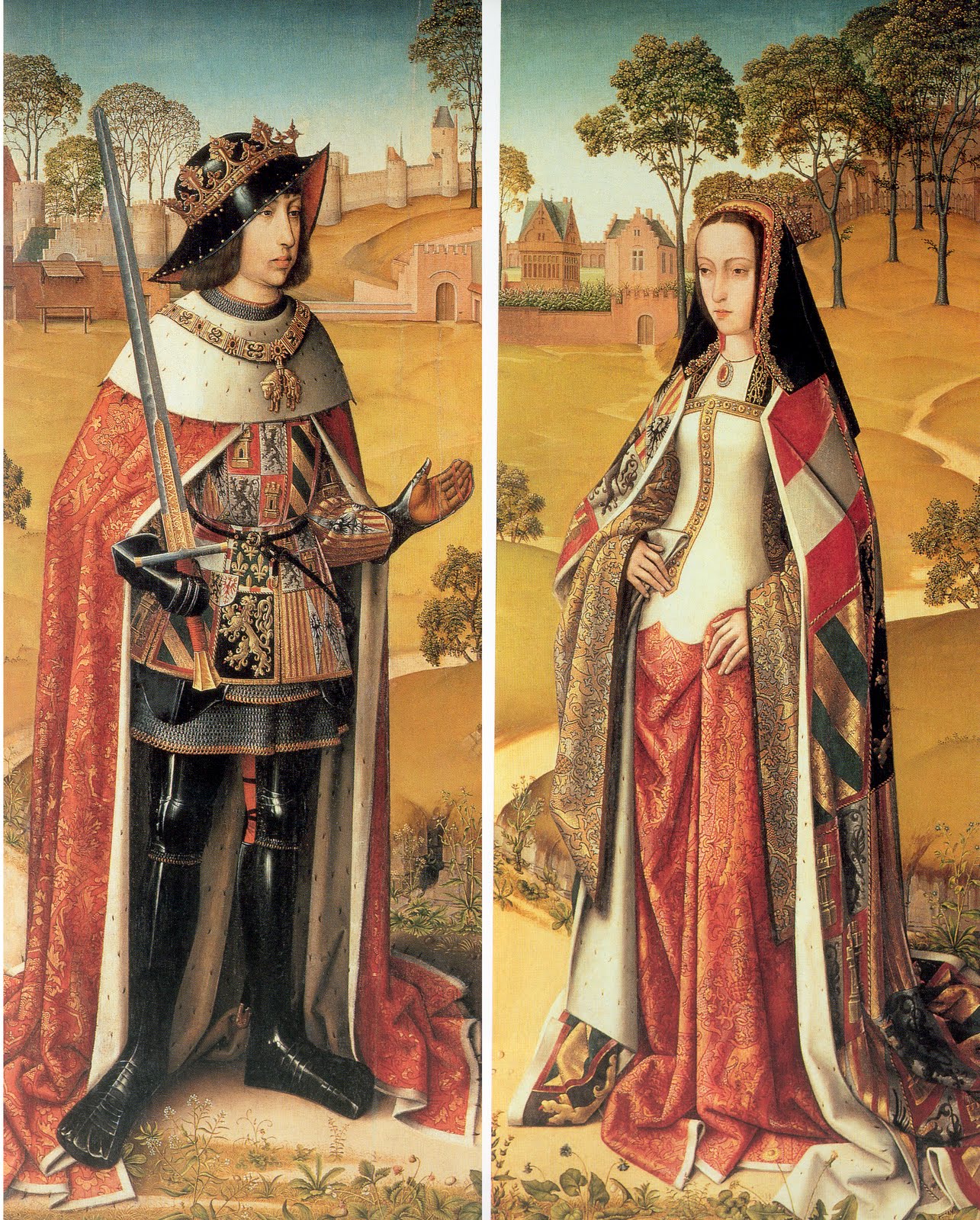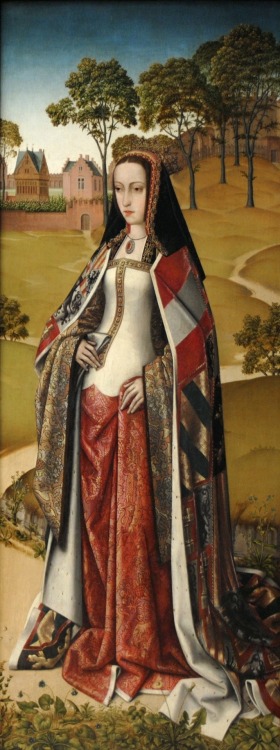
Illumanu
Note: I am not a professional fashion historian. If you spot any inconsistency or outright fallacy somewhere in the picture descriptions please feel free (or even better, obliged) to let me know!
Circa 1500 portrait of Joanna of Castile (AKA Juana la Loca) by Juan de Flandes.
- Description of her from June 1505, as reported by English ambassadors at Valencia:
Instructions to, and report of, Francis Marsin, James Braybrooke, and John Stile, concerning the old Queen of Naples and the young Queen, her daughter.
I. After delivering to the Queens the letters from the Princess of Wales, to note well the estate that they keep.
Audience had by the English ambassadors of the old and young Queen of Naples.
The ambassadors arrived at Valencia the 22nd of June. Next day had an audience of the Queen. Delivered the Princess of Wales’ letters ; the Queens giving their thanks with a grave, stedfast countenance. The Queens have their lodgings severally by themselves, though they keep their estates and households jointly in the King’s palace, and they maintain a noble, sad rule and order among their household.
II. To mark the estates and households kept by the Queens, and to note whom they have about them.
The principal points are answered in the first article. Suits are made daily unto the said Queen’s court of lords spiritual and temporal respecting matters and causes such as might be brought to a King.
III. To note the manner of ordering their estates ; and the discretion and wisdom the Queen may show in her answers to the ambassadors.
Ever since the young Queen came to Spain, she and her mother have kept their estates together. On the delivery of the letters the old Queen replied for herself as a noble, wise woman, and afterwards the young Queen with a sad, noble, sewred countenance, not speaking many words.
IV. Whether the young Queen speak any other languages besides Spanish and Italian.
She understands both Latin and French, but does not speak them.
Description of the young Queen.
V. To note well her age, stature, and features of her body.
Her age is 27, and not much more. Could not come to any perfect knowledge of her stature, by reason of her wearing slippers after the manner of her country. A man could not lightly perceive the features of her body, for that she wore a great mantle of cloth.
VI. To mark her visage, whether painted or not, fat or lean, sharp or round ; cheerful, frowning, or melancholy ; stedfast, light, or blushing.
Is not painted ; of a good compass, amiable, round, and fat ; cheerful, not frowning ; a demure shame-faced countenance ; of few words, but spoken with a womanly laughing cheer and good gravity.
VII. Clearness of skin.
Very fair and clear.
VIII. Colour of hair.
Seems to be of a brown colour.
IX. Eye-brows, teeth, and lips.
Eyes greyish brown ; brows like a wire of brown hair ; teeth fair, clean, well set ; lips somewhat round and full.
X. Nose and forehead.
Nose a little rising in the middle and bowed toward the end. Forehead not perfectly to be discerned, for that her kerchief came down to her brows.
XI. Complexion.
Fair, sanguine, and clean.
XII. Arms.
Round, and not very small ; in length of a good proportion.
XIII. Hands.
Right fair ; somewhat full and soft.
XIV. Fingers.
Right fair and small, and of a meetly length and breadth.
XV. Neck.
Full and comely, not mis-shapen.
XVI. Breasts.
Somewhat great and full, and trussed somewhat high.
XVII. Whether any hair on her lips.
As far as could be perceived, none.
XVIII. To endeavour to speak with her fasting, and that she may tell them some matter at length, so that they may see whether her breath be sweet.
Could never come near to her fasting, but at other times have approached her visage as nigh as they conveniently could, but never felt any savour of spices, and believe her to be of a sweet savour.
XIX. To note her height.
Seemed not to be of high stature ; but by reason of her clothing, and being somewhat round, and well liking, she appeareth somewhat lesser.
XX. To enquire whether she hath any sickness of her nativity, blemish or deformity.
Having considered that such secret causes be to all persons unknown, save to her physician or apothecaries, had applied to Pastorell, who is in a manner physician to both Queens, and who made answer that he had served her many years, and she had ever been in good health, of a noble nature and complexion.
Sentiments of the King of Arragon towards her.
XXI. Whether she be in any singular favour with the King of Arragon, and whether she resemble him.
He right well loveth and favoreth her. It is a common saying in all Spain that she is to be married to the King of England by means of the King of Arragon. Somewhat resembles him in the fashion of her nose and complexion.
XXII. To enquire the manner of her diet.
Is a good feeder, and eateth well her meat twice a day ; drinketh not often ; most commonly water, sometimes cinnamon water, and sometimes ipocras, but not often.
- ‘Spain: June 1505’, Calendar of State Papers, Spain, Volume 1: 1485-1509 (1862)
ca. 1505, Flanders
portrait of Juana, Queen of Castile and Aragon, from the Triptych of the Last Judgment in Zierikzee by Master of Afflighem (Jacob van Laethem?)
Brussels, Koninklijke Musea voor Schone Kunsten van België (Royal Museums of Fine Arts of Belgium)
http://www.wga.hu/frames-e.html?/html/m/master/joseph/wings.html

Also known as Juana la Loca (Joanna the Mad), she was a daughter of Isabel of Castile and Ferdinand of Aragon, wife of Philip the Fair (who is depicted in the left panel of the triptych), mother of Holy Roman Emperor Charles V and sister to (i.a.) Catherine of Aragon.

